Streaming has revolutionized the music industry, especially for Gen Z and millennials who prefer its on-demand convenience. This transformation has prompted everyone—from artists to record labels—to rethink their strategies and adapt to new revenue models and ways to connect with fans.
Platforms like Spotify, Apple Music, and Amazon Music now dominate music discovery and consumption. Their extensive libraries, personalized playlists, and instant access have fundamentally changed how we engage with music. Physical sales and digital downloads have declined, while subscription services and ad-supported models have become major revenue sources for artists and labels.
In this blog post, we’ll dive into how streaming changed the music industry. We’ll look at the state of streaming in 2024, from how listeners find new music to how the economics of music have changed.By the way, if you’re looking to create your own streaming service, check out our music application development services. We can help you build a platform that stands out in this competitive industry.
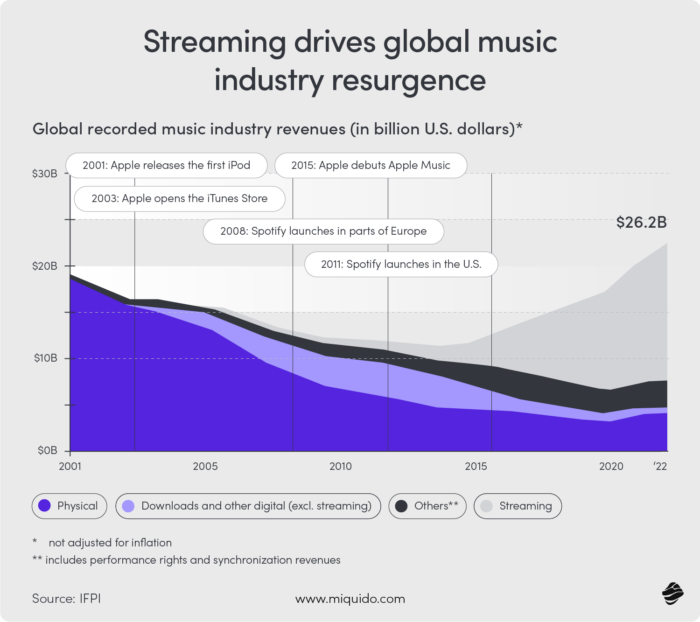
The rise of music streaming
People choose music streaming services for three main reasons: uninterrupted access, ad-free listening, and millions of songs at their fingertips. Subscribers love that they can listen to music without annoying ads.
How streaming changed the music industry is evident in this on-demand access, which lets people create personal playlists and listen anytime, anywhere, making it a top reason for subscribing. The massive library of tracks is another big draw, offering endless listening options.
Reasons for the popularity of streaming services
Music streaming services offer a huge selection of licensed tracks, giving users the freedom to find and play any song they want. This convenience is a major reason why 70% of music fans prefer streaming.
Whether at home, on the go, or during activities, 73% of users enjoy the seamless listening experience. With 72% of users happy with the vast music library and easy access, the impact of streaming on the music industry is clear. Streaming services have reshaped how we listen to and enjoy music.
Technological advancements driving the music and streaming industry
The world of music streaming is constantly evolving, and technology is a major driving force behind the changes in how we consume and interact with music. With the help of sophisticated recommendation algorithms and immersive audio technologies, each innovation transforms how we discover, enjoy, and engage with our favorite songs.
How streaming changed the music industry?Since 2018, streaming revenues have surged from $11.7 billion to an expected $25.8 billion, marking a 120% increase in just five years, as reported by Statista Market Insights. The U.S. leads the growth, accounting for 40% of 2023’s revenue, followed by China, the U.K., and Germany (Statista, 2022).
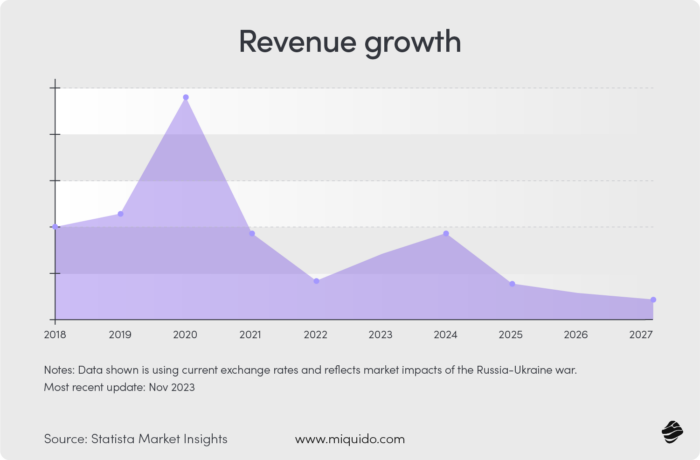
New technologies offering alternative ways of music consumption, like personalized AI-curated playlists and virtual concerts that enhance the listening experience, are a motor of change in music consumption. They encourage more frequent music consumption through convenient solutions that do not require much more than pushing the play button.
Let’s look into how these advancements shape the platforms we use and fundamentally change how we experience music in the digital age.
5G Connectivity
The rollout of 5G networks marks a revolutionary shift in music streaming, offering unprecedented speed and reliability. According to RCRwirelessNews, by Q3 2023, 121 operators had adopted 5G Standalone architecture, with 280 networks launched globally (RCRwireless, 2023) and a forecast for 45% global 5G coverage by year’s end (Ericsson, 2020).
This expansion highlights 5G’s significant impact, including a projected increase by Statista from 1.9 in 2023 to 5.9 billion subscriptions by 2027 (Statista, 2023).
We have gotten used to certain sound quality after years of compressed music files and streams. Meanwhile, 5G, coupled with the latest audio technologies, can provide an intense multilayered music experience.
5G eliminates buffering, enabling high-quality, interruption-free listening. Qualcomm reports that 5G is up to 100 times faster than 4G (Qualcomm, n.d.), greatly enhancing audio quality and supporting lossless formats for a superior listening experience.
Beyond improved fidelity, 5G transforms live music, directly facilitating high-definition streaming of concerts and festivals to your device and paving the way for widespread virtual reality. This technology enhances the music experience and broadens access to live performances, creating new opportunities for artists and the industry.
5G is a revolutionary technology consumers and service providers eagerly anticipate becoming widely available. With 5G, we can expect faster connection speeds, near real-time data transfer, and the ability to utilize immersive technologies.
According to Finances Online prognosis, there will be over 3 billion active 5G subscriptions by 2025 (Finances Online, 2021).
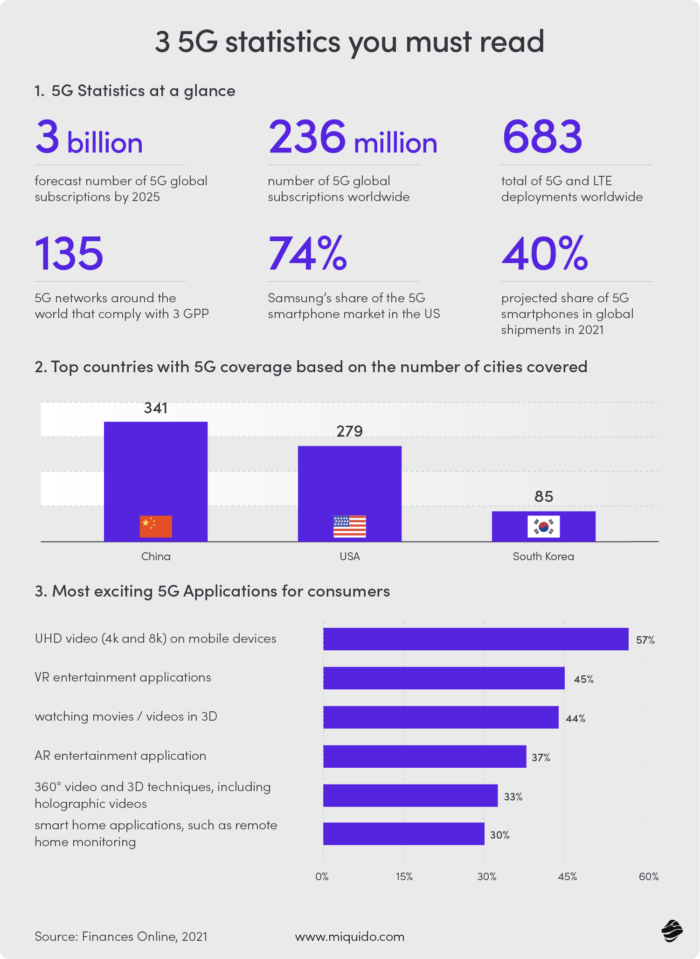
Smart devices for personalized music streaming
As smart homes and connected devices gain popularity, music streaming is becoming an increasingly integrated part of our daily lives.
Voice-activated systems are evolving to understand contextual requests better, playing music to match our mood, time of day or even specific activities. This integration is making the consumption of music a personalized experience tailored specifically to our lifestyles.
Integrating smart devices has significantly shifted how we access and interact with music streaming services. The innovations have gone beyond traditional interaction methods and provided users with a frictionless, hands-free experience in controlling their music playback.
From simple voice commands to complex requests for personalized playlists, smart devices have empowered users with unparalleled convenience and accessibility, enabling them to enjoy their favorite tunes with ease.
Smart speakers
Smart speakers are extremely popular in countries like the United States, Canada and Australia, with ownership rates of 35%, 30% and 28% respectively. These devices have become a central feature in many households, with over half (52%) of them placed in common areas for shared use, promoting a communal approach to their benefits.
Smart speakers are increasingly relied upon to facilitate various tasks, from checking the weather to online shopping, still “90% of the 71 million smart speaker users in the United States use their devices to stream music – some listening for over six hours every week” (Wagoner, C.V., n.d.).
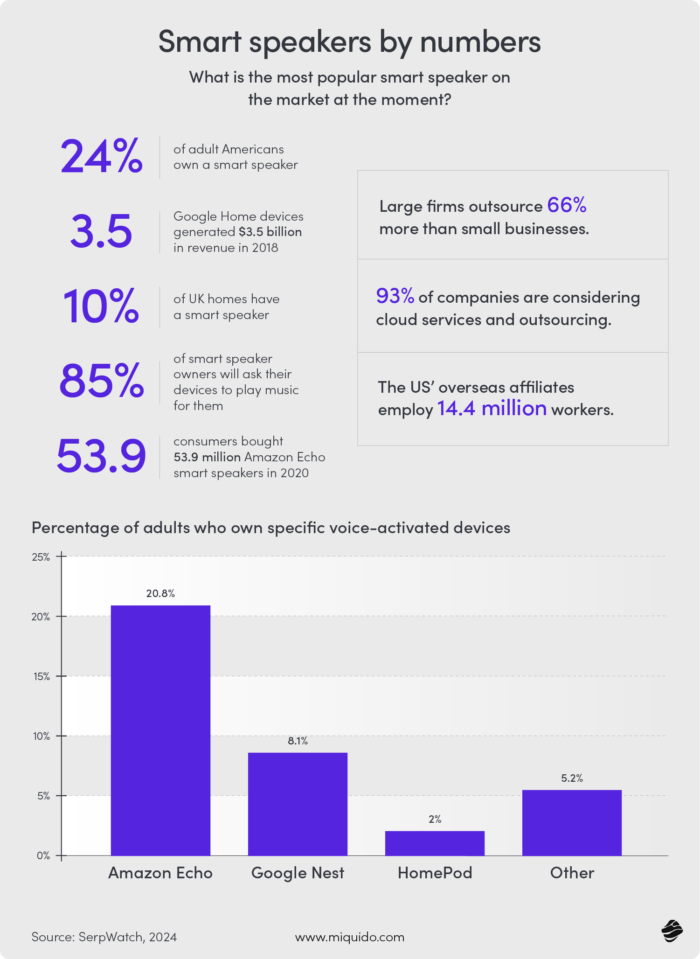
Another standout feature of smart speakers is their ability to integrate seamlessly with a variety of streaming services like Amazon Echo, Google Home, and Apple HomePod, transforming into hubs for home entertainment.
The personalisation aspect of these devices is particularly noteworthy. Using advanced AI algorithms, voice assistants can suggest new music based on users’ listening habits, continually enhancing the discovery process and adapting to evolving preferences.
A simple request such as “Play something I’d like” can lead to the introduction of a new favorite artist or genre.
Voice assistance and Natural Language Processing
Streaming platforms are improving their suggestions through the use of new and advanced artificial intelligence and machine learning. They are likely to adopt initiatives like Spotify’s AI DJ, which not only takes into account listeners’ musical preferences but also considers factors such as their location, time of day, current weather, and more. All of this is aimed at providing users with the most accurate and personalized music recommendations.
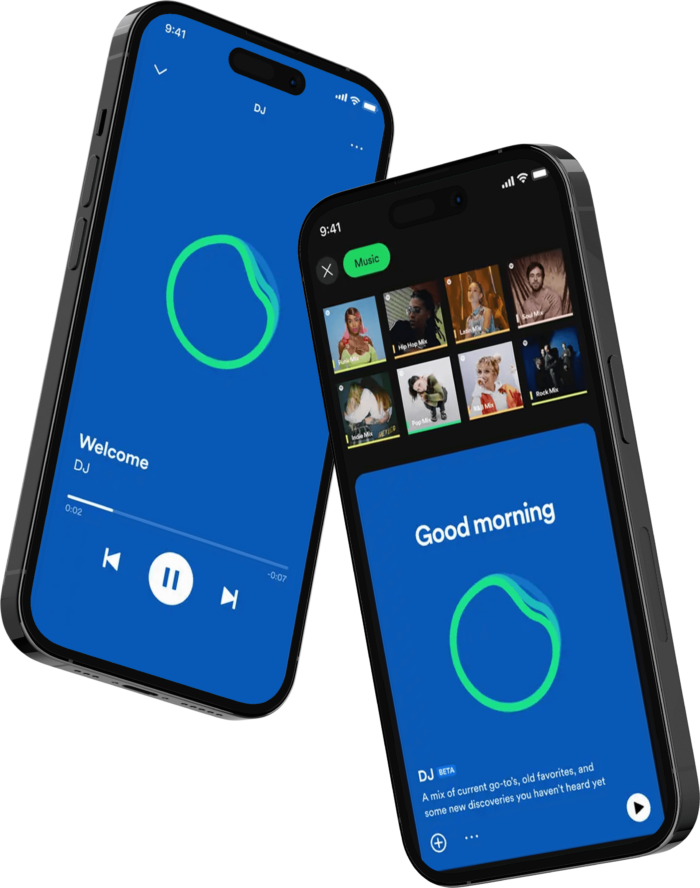
AI-powered music recommendation systems rely on sophisticated technical mechanisms to predict user preferences. These systems analyze user behavior patterns, textual context of songs, and even the auditory features of the music to provide highly accurate and personalized recommendations.
Collaborative Filtering utilizes user behavior patterns to recommend songs enjoyed by similar users.
Meanwhile, Natural Language Processing (NLP) deciphers lyrics and textual data to understand song context, while Audio Modeling analyzes the song’s audio features. These models work both individually and together to create a personalized music experience for the user.
Voice-activated controls and AI personal assistants are becoming essential components of music streaming services, enhancing voice recognition accuracy and contextual understanding for intuitive search and playback commands. This elevates the user experience, making music streaming services more accessible and enjoyable.
Generative AI in music industry plays a pivotal role in generating dynamic content recommendations directly within the user interface. Real-time analysis of user behavior and trends enables AI to suggest playlists or new releases aligned with the user’s preferences, ensuring fresh and personalized content with each interaction. This level of personalization enhances platform engagement, making every interaction unique for the user.
Audio quality evolution
As technology advances rapidly, our ability to experience high-fidelity audio in immersive formats is also increasing. From the scratchy vinyl records of the past to today’s digital files, audio quality has evolved through innovation and refinement. Technological advancements and changing consumer behaviors have influenced the evolution of audio quality.
For instance, smartphone audio playback has evolved significantly, improving speaker quality, frequency response, distortion, spatial reproduction, and volume. These changes have contributed to a more immersive and enjoyable audio experience.
Digital audio technology has undergone a meteoric evolution, driven by advancements in digital electronics, computer technology, DSP theory and techniques, and auditory modeling. The transformation has made music and speech accessible and is a significant component of the information-age revolution.
We have explored several technological breakthroughs shaping our perception and appreciation of sound, ultimately revealing the substantial impact of audio quality evolution on music listening experiences.
From mono to stereo
The shift from mono to stereo sound was a significant milestone in music streaming and recording. It brought about a paradigm shift in how people interacted with audio content.
This evolutionary leap, which spatially separated sound channels, not only enriched the auditory experience but also fundamentally transformed how music was produced, consumed, and appreciated. Stereo sound has shaped the modern audio industry, setting the stage for a new era of immersive and captivating musical experiences.
In the mono era, all sound elements – vocals, instruments, everything – were mixed into a single channel. It meant that no matter how you listened, whether through a speaker or headphones, all components of the music blended into one monolithic block of sound. While it had its charm and simplicity, it lacked depth and spatial awareness. Music in mono was like a painting in one dimension, presenting a flattened, centralized soundscape.
The advent of stereo sound transformed this landscape dramatically. Stereo introduced two separate audio channels, one for the left and the other for the right speaker or earphone. This seemingly simple change had profound implications. It allowed for the placement of different sounds across a horizontal plane, giving a sense of width and space.
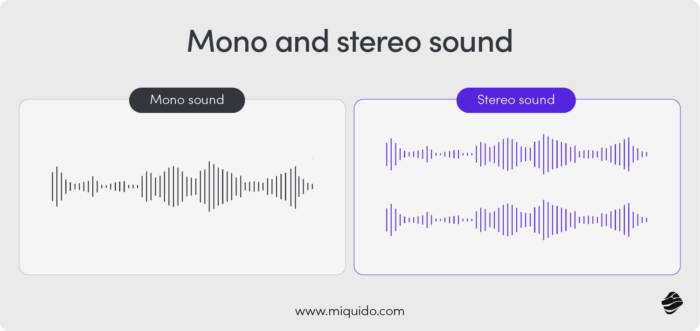
Instruments and vocals could now be separated and positioned within a virtual stage, providing a richer, more realistic listening experience. It was like stepping from a world of flat, monochromatic images into one filled with depth, color, and dimension.
The introduction of stereo sound revolutionized music production and consumption. Producers and artists now had a broader canvas to paint their sonic pictures, experimenting with the placement of sounds to create immersive and dynamic audio experiences.
For listeners, this meant a more engaging and lifelike experience. The music felt closer and more tangible as if it were being performed live in front of them. The stereo era brought listeners into a new realm of audio fidelity, where they could hear the music and feel its movement and texture.
Introduction of digital audio
The advent of digital audio marked a significant turning point in the music industry. This innovation revolutionized recording, storing, and streaming our favorite tunes. Traditional analogue methods gave way to a new era of precision, flexibility, and accessibility with the introduction of digital technology.
The digital revolution in audio began with the transition from analogue to digital recording. In the analogue world, sound waves were captured in their original form, often resulting in imperfections and noise.
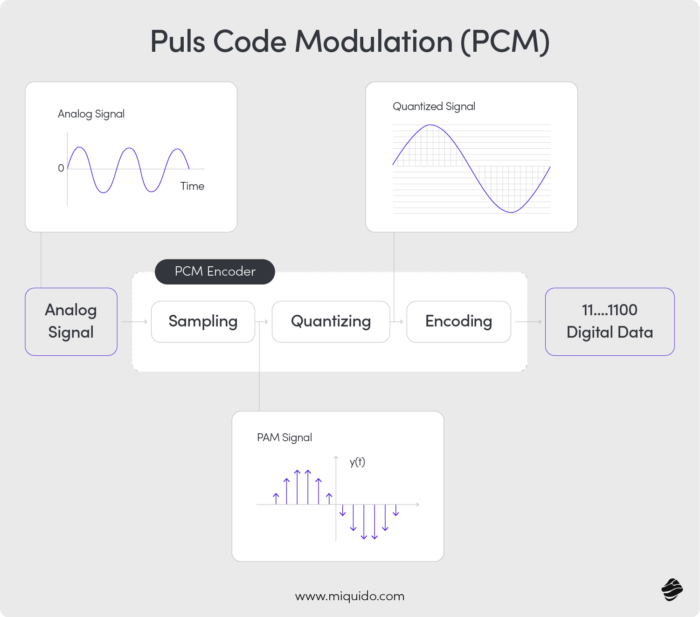
Digital audio changed the game by converting sound into a digital format, typically through Pulse Code Modulation (PCM). The conversion involved sampling the sound wave at regular intervals and representing these samples in binary code.
The result was a cleaner, more consistent sound quality, free from the hisses and distortions characteristic of analogue recordings. Digital audio has surpassed analogue in terms of fidelity, convenience, and versatility, fundamentally and permanently transforming how we experience music.
Digital audio brought about a significant enhancement in sound quality. It allowed for greater dynamic range, reduced noise, and more precise control over the recording process. Moreover, the compactness of digital audio files, such as the widely used MP3 format, made storing, sharing, and streaming music easier.
This accessibility revolutionized music consumption, paving the way for the rise of digital music libraries, portable music players, and, eventually, music streaming services.
Spatial Audio And 3D Sound
Music streaming has been going through a major transformation in recent years, thanks to the introduction of spatial audio and 3D sound technologies. These advancements improve the sound quality and transform our auditory experiences by providing a new sense of depth, immersion, and realism.
Let’s examine how these cutting-edge technologies change how we perceive and interact with music in the digital age, as this advancement is not just an improvement in audio quality; it’s a complete reimagining of the music experience.
Spatial audio and 3D sound technologies, like Dolby Atmos Music and Sony 360 Reality Audio, are changing the way we perceive music. Traditional stereo audio confines sound to a two-dimensional plane, but spatial audio breaks these boundaries, creating a three-dimensional soundscape.
This technology places individual sounds and instruments around the listener, crafting a truly immersive experience. It’s like being in a concert hall, with music coming from all directions. The listener is no longer a passive recipient but an active participant in the musical journey, fully immersed in the sound.
Impact of streaming on music industry
Looking ahead, the future of music streaming is poised for exciting advancements that will further revolutionize the industry. Personalized AI-curated playlists are set to become even more sophisticated, tailoring music recommendations based on listening habits, moods, and contexts for a truly customized experience.
Virtual reality and augmented reality technologies are also on the horizon, promising to transform live music with virtual concerts that fans can attend from anywhere, creating immersive and interactive experiences that go beyond geographical boundaries.
The impact of streaming on the music industry is profound and ongoing. As streaming continues to integrate more deeply into our daily lives, the bond between artists and listeners will strengthen, fostering new opportunities for growth and interaction.
Embrace the full potential of streaming in music
If you’re inspired by the transformative power of music streaming and want to create your own platform, now is the perfect time to act.
Contact us today to learn more about how we can assist you in developing cutting-edge streaming platforms tailored to your needs. Leverage our experience and innovative approach to create a music streaming service that captivates audiences and thrives in the ever-evolving digital landscape.
Discover how to create a music streaming app by exploring our comprehensive guide. Additionally, you can read the article about the exciting potential of generative AI in music creation.





![[header] how is ai used in the music industry overcoming trust, fraud & transparency challenges with ai](https://www.miquido.com/wp-content/uploads/2025/04/header-how-is-ai-used-in-the-music-industry_-overcoming-trust-fraud-transparency-challenges-with-ai-432x288.jpg)



